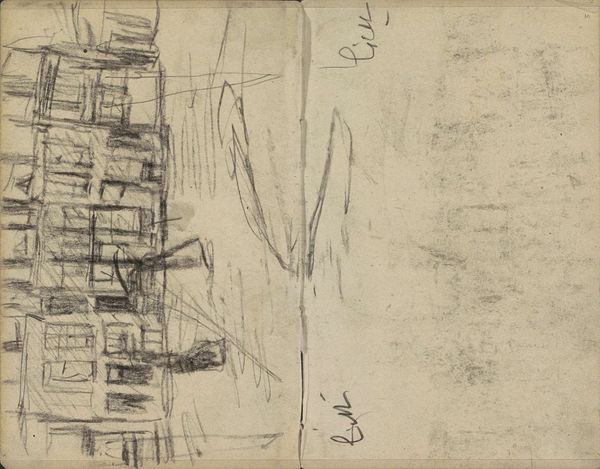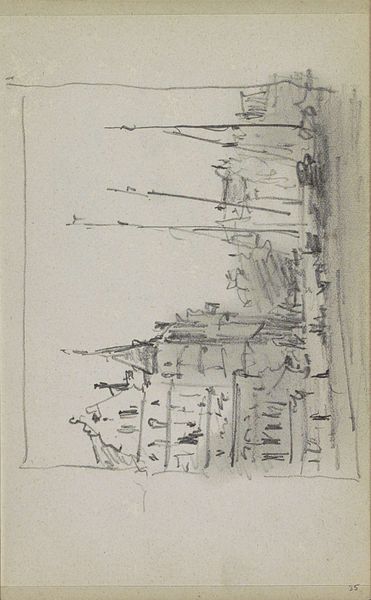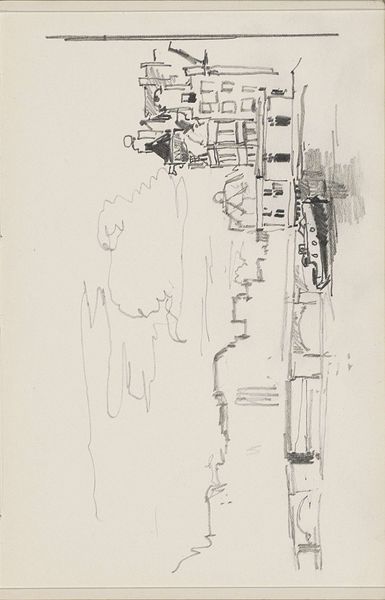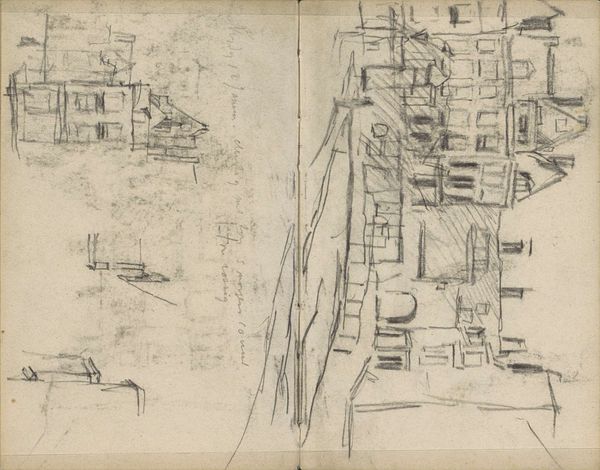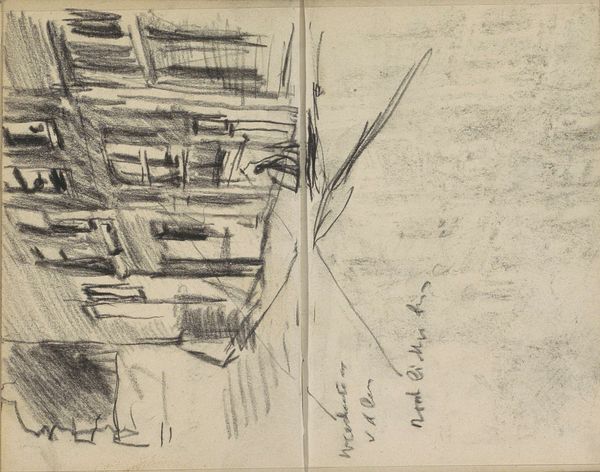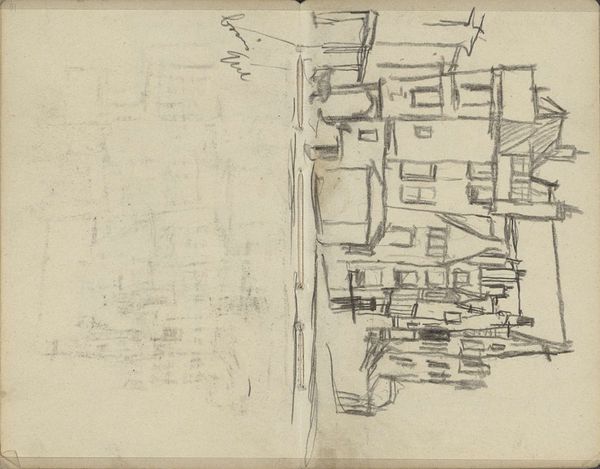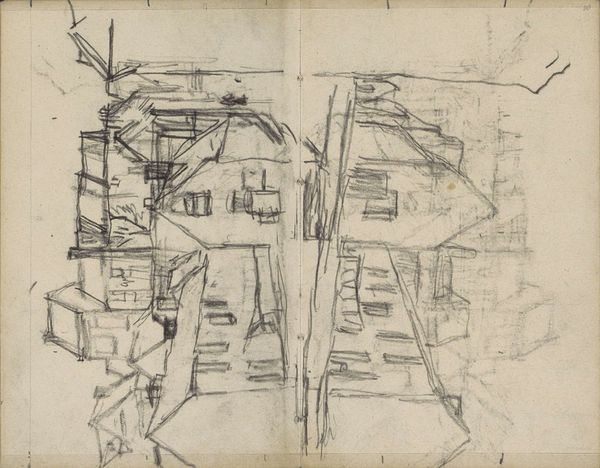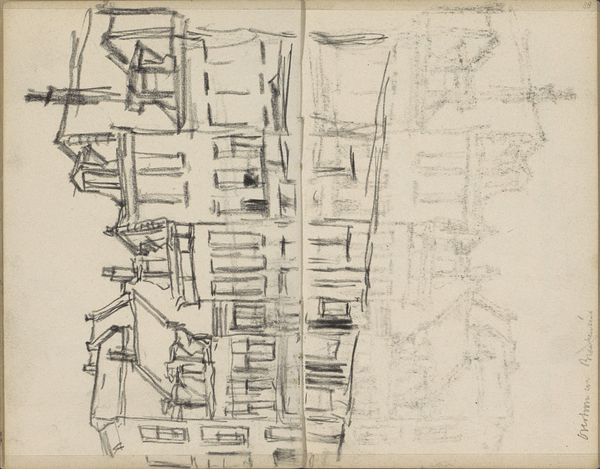
Gezicht op De Nederlandsche Bank aan de Oude Turfmarkt 127-129 te Amsterdam c. 1900
0:00
0:00
georgehendrikbreitner
Rijksmuseum
Copyright: Rijks Museum: Open Domain
Editor: This is George Hendrik Breitner's sketch, "Gezicht op De Nederlandsche Bank aan de Oude Turfmarkt 127-129 te Amsterdam," made around 1900 using pencil and pen. It’s just a quick impression of the Dutch Bank; what really stands out is the contrast between the crisp lines on the right page, and the vaguer shapes on the left page. What does it mean to you? Curator: For me, Breitner's sketch goes beyond a mere architectural study; it's a glimpse into the socio-political landscape of Amsterdam at the turn of the century. Look closely: one side seems bold and well defined. And compare that to the ghostly mirror on the other side of the sketchbook. How do we reconcile these oppositions of concrete and theoretical? This suggests a society grappling with defining its own rapidly changing image, economically and politically. Editor: That's fascinating. So the drawing is less about the bank itself, and more about what it *represents* during that time? Curator: Exactly. The Dutch Bank wasn't just a building, it symbolized capital, power, and perhaps exclusion for many. Breitner, known for documenting everyday life, subtly hints at these social stratifications through the visual language of the sketch. Are these concrete buildings supporting, or suppressing the intangible ideas across the gutter? Editor: So, his artistic choices, like leaving parts of the drawing unfinished, might be a deliberate comment on societal imbalances? Curator: Precisely! He’s encouraging us to question what's represented, and who benefits. Now, how does this interpretation sit with your own understanding of early 20th-century Dutch society? Editor: It's eye-opening to think about a seemingly simple sketch as a coded social commentary. I didn't consider the implications of his choices on each page of the book, such as showing that lack of refinement on one side to imply instability. Curator: And by viewing the work through an intersectional lens, we can gain a much deeper insight into the art of the time, and hopefully our own biases and perspectives today as well.
Comments
No comments
Be the first to comment and join the conversation on the ultimate creative platform.
